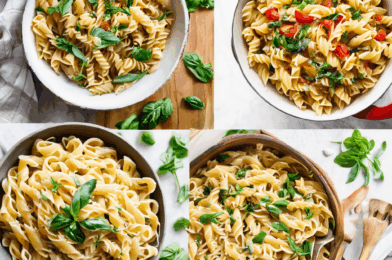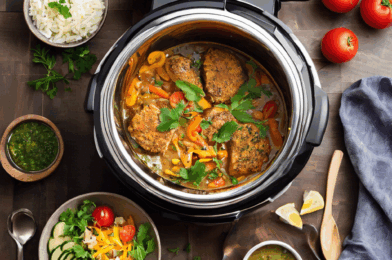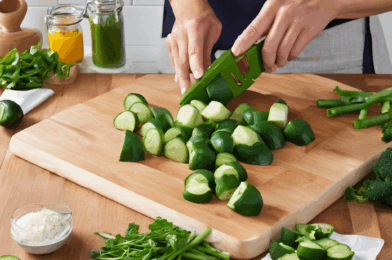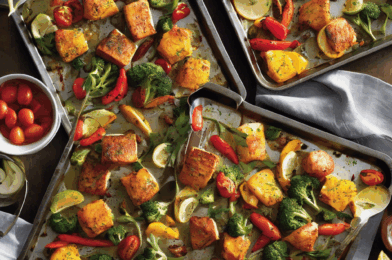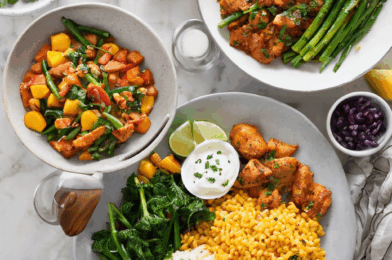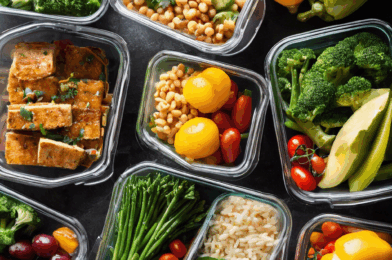The familiar scenario unfolds yet again: you’ve just walked through your front door after a particularly demanding day, hunger gnawing insistently while your energy reserves hover dangerously close to empty. The refrigerator inspection reveals a discouraging landscape of random ingredients that seemingly resist cohesion into anything resembling a proper meal. The temptation to reach for delivery apps grows stronger with each passing minute.
Before surrendering to another takeout evening, consider this culinary lifeline – your pantry likely contains everything necessary for remarkably satisfying pasta dishes requiring just five ingredients and 15 minutes. These aren’t compromise meals born purely from desperation, but rather cleverly constructed combinations that capitalize on pantry staples’ inherent potential.
The Science Behind Successful Pantry Pasta
Understanding several fundamental principles transforms limited ingredients into memorably delicious meals. The magic lies not in elaborate shopping lists but in technique and thoughtful combination.
The Pasta Water Secret
That cloudy liquid most home cooks discard actually represents liquid gold for sauce creation. As pasta cooks, it releases starch into the water, creating a naturally thickening agent crucial for sauce development. Skilled pasta makers always reserve at least 1 cup before draining.
When incorporated into minimal ingredient sauces, this starchy water:
- Creates silky texture without added cream
- Helps emulsify oil-based sauces
- Provides necessary moisture without diluting flavor
- Carries flavor molecules efficiently throughout the dish
The Flavor Concentration Principle
With fewer ingredients, maximizing each component’s contribution becomes essential. Several techniques intensify flavor profiles:
- Toasting dried herbs and spices in oil releases volatile compounds
- Browning garlic to golden (not dark brown) develops complexity
- Reducing liquids concentrates existing flavors
- Salt timing impacts perception (season cooking water generously)
Essential Pantry Building Blocks
Before exploring specific recipes, ensuring your kitchen contains these versatile foundation ingredients guarantees pasta success regardless of what else might be available:
Pasta Varieties:
- Long shapes: spaghetti, linguine, fettuccine
- Short shapes: penne, rigatoni, farfalle, orecchiette
- Specialty options: orzo, couscous
Flavor Foundations:
- Quality olive oil (one everyday version, one finishing oil)
- Garlic (fresh preferred, but jarred works in emergencies)
- Dried herbs (oregano, basil, red pepper flakes)
- Anchovy paste or canned anchovies (adds depth without fishiness)
Shelf-Stable Add-Ins:
- Canned tomatoes (whole, crushed, and paste)
- Olives and capers
- Canned beans (chickpeas, cannellini)
- Nuts (pine nuts, walnuts, almonds)
- Jarred roasted peppers
- Artichoke hearts
Long-Lasting Fresh Items:
- Hard cheeses (Parmesan, Pecorino)
- Lemons and limes
- Hardy herbs like rosemary
Five 15-Minute Pasta Formulas
Rather than rigid recipes, these adaptable frameworks accommodate whatever specific brands or variations your pantry contains.
1. Cacio e Pepe: Elegance Through Simplicity
This Roman classic demonstrates how minimal ingredients create extraordinary results through proper technique.
Ingredients:
- 8 oz pasta (traditionally spaghetti, but any shape works)
- 2 tablespoons butter
- 1 tablespoon olive oil
- 1½ teaspoons freshly ground black pepper
- 1 cup grated Pecorino Romano (Parmesan substitutes beautifully)
Method:
- Cook pasta in heavily salted water until al dente
- Meanwhile, melt butter with olive oil in large skillet
- Add pepper, cooking until fragrant (about 30 seconds)
- Reserve 1 cup pasta water before draining
- Add ½ cup pasta water and drained pasta to skillet
- Reduce heat to low, add cheese gradually while tossing constantly
- Add additional pasta water as needed for silky consistency
Technique note: The continuous motion while adding cheese prevents clumping and creates the signature creamy sauce without cream.
2. Aglio e Olio with Breadcrumb Crunch
This southern Italian staple transforms humble ingredients into a textural delight.
Ingredients:
- 8 oz pasta (spaghetti or linguine ideal)
- ⅓ cup quality olive oil
- 5-6 garlic cloves, thinly sliced
- ½ teaspoon red pepper flakes
- ½ cup toasted breadcrumbs (make from stale bread or crackers)
Method:
- Cook pasta in salted water until al dente
- Meanwhile, heat olive oil in large skillet over medium-low heat
- Add sliced garlic, cooking until golden but not brown (3-4 minutes)
- Add red pepper flakes, cook 30 seconds more
- Reserve ½ cup pasta water before draining
- Add drained pasta to skillet, tossing to coat
- Add splash of pasta water if needed for consistency
- Top with toasted breadcrumbs before serving
Variation note: Add chopped parsley or lemon zest if available, but this dish shines even without them.
3. Tomato-Butter Sauce: Transcendent Simplicity
Made famous by Italian cookbook author Marcella Hazan, this sauce seems impossibly good given its ingredient count.
Ingredients:
- 8 oz pasta (any shape works beautifully)
- 1 can (14 oz) whole peeled tomatoes
- 5 tablespoons butter
- 1 medium onion, peeled and halved
- Parmesan cheese for serving
Method:
- Start pasta water heating while preparing sauce
- In separate saucepan, combine undrained tomatoes, butter, and onion halves
- Bring to simmer over medium heat
- Reduce heat to maintain gentle simmer for 10-15 minutes, occasionally crushing tomatoes with spoon
- Meanwhile, cook pasta until al dente
- Remove onion from sauce (can be saved for another use)
- Drain pasta, toss with sauce
- Top with grated Parmesan
Technique insight: The butter’s richness balances tomato acidity perfectly without added sugar or long cooking times.
4. Olive and Caper Puttanesca
This assertively flavored sauce requires no fresh ingredients yet delivers remarkable depth.
Ingredients:
- 8 oz pasta (traditionally spaghetti)
- 2 tablespoons olive oil
- 3 cloves garlic, minced
- 1 can (14 oz) crushed tomatoes
- ⅓ cup combination of chopped olives and capers
Method:
- Cook pasta in salted water until al dente
- Meanwhile, heat oil in large skillet over medium heat
- Add garlic, cooking until fragrant but not browned (about 1 minute)
- Add crushed tomatoes, simmer 5 minutes
- Add olives and capers, simmer additional 2-3 minutes
- Reserve ½ cup pasta water before draining
- Toss drained pasta with sauce, adding splash of pasta water if needed
Pantry flexibility: Any olive variety works—kalamata, green, or mixed. The distinctive briny flavor profile shines regardless.
5. Creamy Chickpea and Lemon
This unexpectedly luscious dish creates creamy texture without dairy through clever technique.
Ingredients:
- 8 oz pasta (short shapes like orecchiette work particularly well)
- 1 can chickpeas, drained and rinsed
- 3 tablespoons olive oil
- 2 garlic cloves, minced
- 1 lemon (zest and juice)
Method:
- Cook pasta in salted water until al dente
- Meanwhile, heat olive oil in large skillet over medium heat
- Add garlic, cooking until fragrant (about 1 minute)
- Add half the chickpeas, mashing roughly with wooden spoon
- Add remaining whole chickpeas
- Reserve 1 cup pasta water before draining
- Add drained pasta and ½ cup pasta water to skillet
- Toss continuously until sauce thickens
- Remove from heat, add lemon zest and juice
Texture secret: The contrast between mashed and whole chickpeas creates interesting texture variation.
Troubleshooting Common Pantry Pasta Challenges
Even these straightforward dishes sometimes present difficulties. These solutions address frequent issues:
Sauce Too Thin
Problem: Sauce slides off pasta rather than coating it Solution: Continue cooking sauce and pasta together in skillet until liquid reduces; add additional grated cheese which acts as thickener
Pasta Clumping
Problem: Pasta strands stick together after draining Solution: Drain pasta just before it reaches al dente and finish cooking directly in sauce; alternatively, toss immediately with olive oil if sauce isn’t ready
Flavor Balance Issues
Problem: Dish tastes flat despite following recipe Solution: Add brightness with acid (lemon juice, vinegar splash); increase saltiness with cheese rather than more table salt; incorporate umami through anchovy paste or soy sauce dash
Elevating Your Pantry Pasta Game
Once comfortable with these foundations, consider these strategies for continued development:
Pantry Optimization
Reorganize storage to create a dedicated “pasta emergency” section containing:
- Individual portions of dried pasta in multiple shapes
- Shelf-stable flavor boosters grouped together
- Clear labeling system for quick identification
Freezer Supplements
Extend pantry possibilities with these freezer additions that maintain exceptional quality:
- Frozen herbs in olive oil ice cubes
- Grated cheese portions
- Homemade breadcrumbs
- Reserved portions of special ingredients
Technique Refinement
Practice these specific skills to elevate every pantry pasta:
- One-pot pasta timing (adding ingredients in proper sequence)
- Pasta water management (learning ideal amount for different sauces)
- Heat level control (maintaining gentle simmer rather than vigorous boil)
Beyond Crisis Cooking: Intentional Pantry Pasta
While these recipes excel during urgent hunger situations, they deserve regular rotation regardless of circumstances. Consider implementing a weekly “pantry pasta night” with several benefits:
- Reduces grocery budget by utilizing existing ingredients
- Prevents pantry item stagnation
- Builds intuitive cooking confidence
- Creates space for culinary creativity within constraints
The most liberating revelation about pantry pasta comes through understanding that these dishes represent not compromised alternatives to “real cooking,” but rather the essence of Italian culinary philosophy—allowing quality ingredients to shine through minimal manipulation.
Next time emptiness greets you from the refrigerator, turn confidently toward your pantry. Within those shelves wait the components of dishes that have satisfied discriminating palates for generations—no compromises necessary, just fifteen minutes of alchemical transformation from basic ingredients to exceptional dining.
